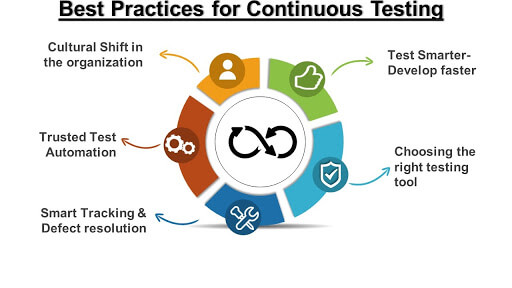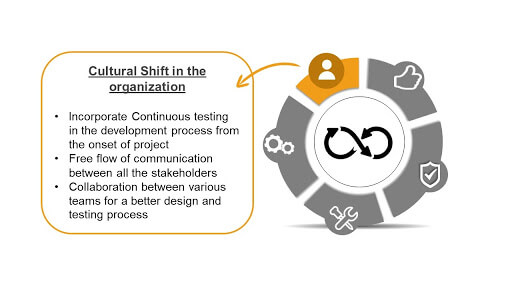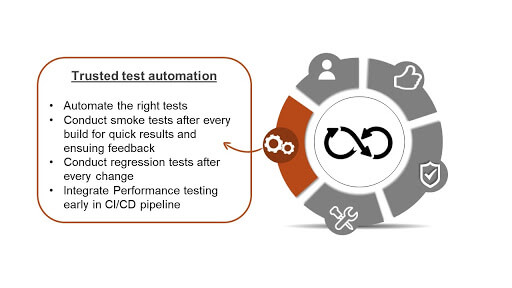5 Best Practices for Continuous Testing
by Webomates Inc Test Automation CompanyContinuous testing is end-to-end automated testing that is an integral part of DevOps and is conducted at every level of development in various forms. It acts as a catalyst in speeding up the CI/CD pipeline, by incorporating automated processes and tools for testing early and testing often at all points of time.
Organizations need to follow certain best practices and have a sound strategy in place, in order to reap maximum benefits by implementing Continuous testing in their DevOps process.
This article discusses the top 5 best practices that can be adopted for a comprehensive continuous testing process.

The above figure enunciates the best practices involved in implementing Continuous testing in your CI/CD pipeline. Let us discuss these practices further in detail.
1. The cultural shift in the organization

Continuous testing is not just a “technical process”. It is a mindset too. Just having a technical process in place is futile, unless relevant stakeholders are willing to embrace it. For that to happen, a free flow of communication and collaboration is required between the software architects, developers, and QA team. They should be involved from the very onset of the project to understand the intricacies of client requirements and work upon them accordingly.
Continuous testing implies “test early-test often”. In order to implement this, a holistic testing strategy is needed, which can be devised when there is a meaningful collaboration and information exchange is done more frequently so that all the stakeholders are on the same page. Everyone involved in design-development-testing has to be kept updated on user stories and any changes are immediately communicated to them.
2. Trusted Test Automation

Continuous testing involves frequent testing, hence it is a good idea to automate the business-critical test cases in order to accelerate the end-to-end testing. This not only speeds up the whole testing-feedback loop but significantly improves the quality of the build, leading to the overall health improvement of the software. However, choosing the right cases to automate is the key to successful automation. Read more about it on our blog about test case prioritization.
Test automation responsibility must be shouldered jointly by the development and testing team, in order to achieve a holistic approach towards automation. This approach not only expedites the whole development process but also helps in improving feature velocity and aids in achieving shorter delivery cycles.
It is imperative to run smoke tests and regression tests after every build to ensure that new feature inclusions, modifications, or bug fixing have not inadvertently broken any critical business scenarios, and the build is working as per the expectations.
Shift left approach towards performance testing is gaining importance these days. Conducting performance tests early in development cycles also ensures that besides the functionality, the performance criteria have been met too, thus confirming the reliability and robustness of the application under test.
A very important factor to consider is that the automation test results should be dependable. Many times there are false failures, which sends the development and QA team on a wild goose chase, leading to wastage of time and efforts. Incidents like these pose question marks on the automated results.
Webomates has an ingenious AI-based Defect predictor which handles such situations. Click here to learn more about our Defect Predictor.
Sponsor Ads
Created on Dec 30th 2021 02:55. Viewed 227 times.



